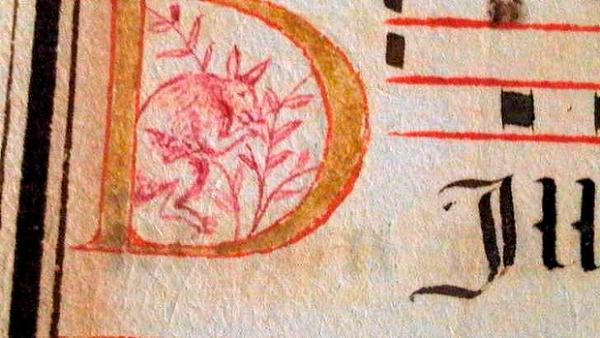
By NOEL MURPHY
That’s no kangaroo — that’s an aardvark.
And with that, cold water has been tipped on a New York suggestion the Portuguese discovered Australia – and, by extension, with a possible Geelong role – hundreds of years before James Cook landed on the continent’s east coast.
Latrobe University lecturer Peter Pridmore has attacked an art gallery’s claim a 16th Portuguese manuscript features a picture of a kangaroo, saying the animal is more likely an aardvark.
The claim, by the curators of New York gallery Les Enlumineres’ Sacred Song exhibition, Laura Light and Susan Bonython , was that the sketch — in a personal book, called a processional, thought to be originally owned by a Caterina de Carvalho – could contribute to “a still-raging argument: Who discovered Australia – the Dutch or the Portuguese?”
But according to Pridmore, it’s a big call, one he calls “problematic”.The animal looks far more like an aardvark, a creature the Portuguese were more likely to have contact with, than a kangaroo.
Writing at The Conversation website, Pridmore said the relative proportions of forelimbs and hindlimbs of the manuscript animal were consistent with it being an aardvark “as indeed is its posture, since aardvarks like other strong digging mammals often use a bipedal stance and balance on their hind limbs alone”.
“The manuscript drawing seems to have been based on a live, rather than a tanned specimen,” he said.
“Features that suggest this are the life-like disposition of its head and especially its ears, and its stance. This argues for an animal native to an area close to Portugal, rather than one as distant as Australia.
“That a live aardvark might have been accessible to the manuscript artist might seem unlikely. However, Portuguese kings are known to have maintained menageries for centuries before the manuscript date.”
Corio Bay has long been suggested as the 1522 wintering site of Portuguese explorer Cristovao de Mendonca. The late Geelong author Ken McIntyre raised the theory in his 1970s book, The Secret Discovery of Australia.
Mr McIntyre contended that Mendonca led three ships, including Warrnambool’s mysterious Mahogany Ship, along the east coast of Australia on a secret mission into what was then Spanish territory.
His theories had the support of evidence such as redrawn maps with an uncanny resemblance to the east coast and the discovery of strangely-shaped ancient keys deep in Geelong beach sand.







